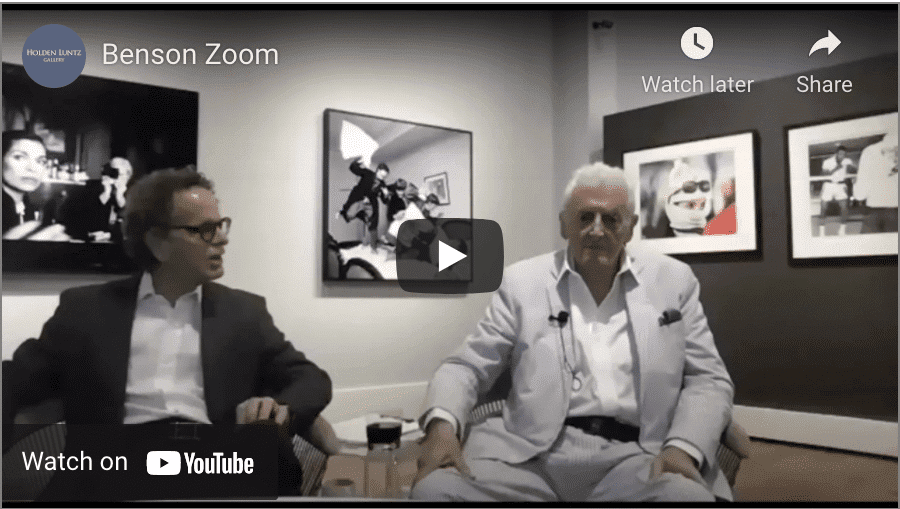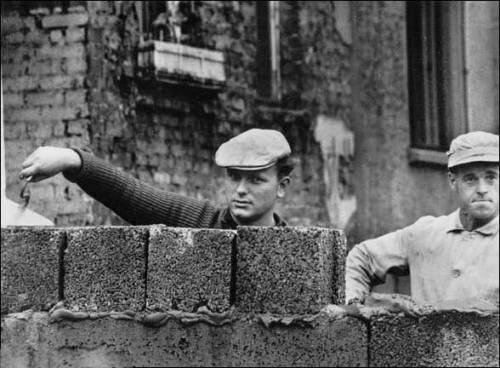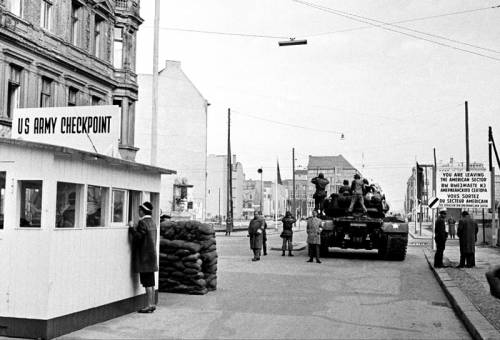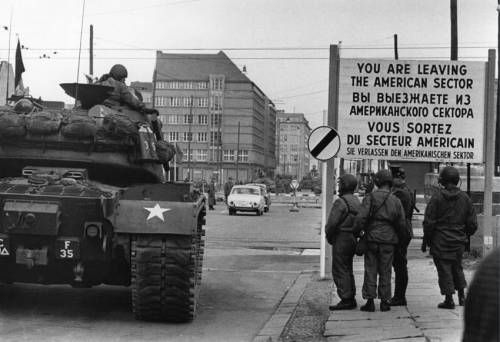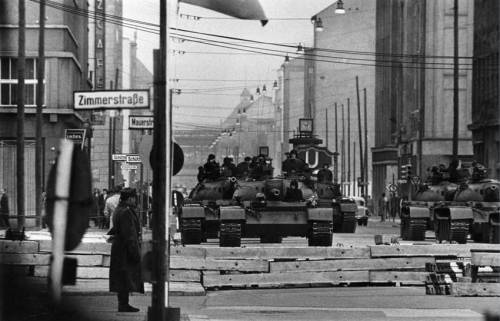Please watch as Holden Luntz leads a discussion with Harry Benson as he reflects back on highlights from his incredible 60 plus year career of photographing great moments in history as well as capturing many of the greatest personalities that have defined our modern world.
Luntz: I have the pleasure of being here with the esteemed Harry Benson, one of the world’s greatest photographers. Harry is a very special photographer for me and for the gallery, because of all the photographers that we’ve had, Harry goes back to the start. He believed in us, and we believed in him right out of the box. And I think if you look at some of the images that Harry’s produced, and some of the 17 books that he’s been behind, you will see that there probably is not another living photographer with the range and the breadth and the sheer fascination of having the camera in front of more famous people and in front of more world events.
So Harry has been a remarkable 60 plus years of living history. Gigi and Harry have become very close friends of ours and Gigi is, of course, Harry’s wife. Harry doesn’t make a move without her.
If people ask me what makes for a great photographer, I would say the easiest, most self-evident answer is a great photographer produces great pictures. And over the decades that we have been working together, Harry has produced outstanding pictures, and he’s truly been a durable, great photographer.
Harry, how did you find your calling? 50 some odd years ago, 60 some odd years ago, I don’t know, I’m not going to give away your age. How did you, as a young man in Glasgow, find this is what you wanted to do?
Benson: I can’t say anything that you haven’t said. What I’ve got to say, can only go downhill. Let me share, I wanted to be a news photographer. And I can go back, I remember the Lindbergh baby kidnapping. I remember, it was on the cover, front page of the Glasgow Bulletin, big picture of a nice little boy with blonde hair and he was about the same age as me. I remember it clearly. My father and my mother were crying. That was my first, you know..
Luntz: It moved you.
Benson: It really did. I can remember it clearly.
Luntz: And did you find as a photographer early on that you had the ability to tell stories?
Benson: The thing about photography then for me was getting to the center. You’re looking for the center of the story. You want to get out of this circle and break into the center. That is good news picture, but it also is, is in all photography you want to see.
Luntz: You want to get the story.
Benson: You want the story, but you want the picture. Because I want a work that will be clear what you’re starting to articulate the whole situation. Get as close as you can.
Churchill

Luntz: The first serious picture that I consistently show of yours is Churchill at Harrow. What do you think of when you look at this picture now, so many years later?
Benson: I think I’m a genius. I’m just about the greatest of all time. I remember the speeches during the war. I grew up in the war. And this was Churchill’s last visit to Harrow, his school, and the boys came out and sang, “Churchill’s name shall win acclaim through each new generation.” They sang that. I photographed Churchill a few times and it was always, I wanted to do the best I could. Because he was simply the greatest mind of his generation, you know…
Luntz: What’s nice too, is he’s not flashing a victory sign. It’s a sort of an intimate private moment.
Benson: I would like to have had the “V” sign.
Luntz: So it was an honor to shoot Churchill.
Benson: That’s right.
Princess Margaret

Benson: That was the queen.
Luntz: She is in a coal mine?
Benson: Yeah she went down a mine in Wales. That was one of my first royal pictures for the London Daily Sketch. But I’d never seen the Queen dress, like, like that and…
Luntz: No, she looks like she could fix your car. Pretty amazing.
Civil Rights

Luntz: So question as we go, as we go through the next couple of pictures. Now, everybody with a digital camera gets out there and points and shoots. But back there, tell me about the equipment you used. You said you didn’t really have light meters, you didn’t have focus, it was was really learning a craft.
Benson: We had light meters, but they were slow. This the Watts Riots. Madness. What a bad night.
Luntz: Now, these are pictures that to me are interesting to show the people that are watching the Zoom because they are pictures that define you, Harry, and define the urgency of you being there, risking your safety, getting the story. But they’re not pictures that go on the wall, but there are pictures that show a dimension of you as a photographer that has a sort of an urgency to tell the story.
Benson: Well, they may not go on your wall but certainly can go.
Luntz: Museums
Benson: Very good walls.
Luntz: Absolutely. But I want to show pictures to our zoom audience, I want to show the whole breadth of Harry Benson. Harry Benson, you know, is there to tell any vital story that should be told.
The Berlin Wall
Benson: The day the wall went up. And there we are. Checkpoint Charlie. That’s where they’re going to put the wall up and right back there were the Russians and in the distance is a Russian tank they had moved up.
Luntz: And who are you shooting this for?
Benson: London Daily Express. That was the first morning…
Luntz: Of the wall, of the enforcement of Checkpoint Charlie. Tell me, you have an interesting story as a sort of scrapper. When you took photographs, photography was a tough enterprise in Britain with all of its dailies and everybody trying to get the scoop, and everybody trying to be the first to be there. Tell me about, you. You started with The Sketch, so tell me from The Sketch, the London Daily News is a huge circulation paper, how you got from your early days from The Sketch to the Daily News.
Benson: Well The Sketch was better than the Daily News.
Luntz: You think so?
Benson: Oh yeah, better photographers. If you go to an event, and these events, something like the Berlin Wall, was dangerous because the Russians had, there was a line you couldn’t cross or you would be shot.
Holden: And that’s the line right there, right?
Benson: Yeah.
Luntz: It’s a remarkable picture.
Benson: That’s the yanks and over there the Russian tanks moved up and that went on.
Luntz: Was it tough to get this story, or were you invited?
Benson: No you’re not invited.
Luntz: So how’d you get the, how did you get to be in front of this place to be able to make the picture?
Benson: I got a taxi driver to take me as close as he could to, they called it “The Green Line.” This is at the Brandenburg Gate. And these are Russian troops. They had taken over.
Luntz: This is a big story, and they’re great pictures.

Luntz: So tell me what happens here.
Benson: Well, on the right is the Berlin wall. And there were gangs along the wall, West Germany, and I was photographing them because they were punks, gangs. And just before I finished, two gentlemen came over to talk to me. They were West Berlin police detectives. That guy said to me, at least two of these people I’m photographing a part of the Baader Meinhof group.
Luntz: Oh boy.
Benson: And that was a terrorist group in, in Berlin, big trouble. And they had gun, knives, and…
Luntz: Is the guy in the front brandishing a knife?
Benson: Yes.
Luntz: So, it’s not the friendliest, huh?
Berlin Nightlife

Luntz: All right, so tell me about life in Berlin on the wild side.
Benson: Berlin nightlife was like no other nightlife that I’d been anywhere. Everything, anything goes.
Luntz: And that was where?
Benson: In Berlin, basically that was in East Berlin, but the West Berliners would go there to the nightclubs. You know?
Luntz: And when you took this picture, were people okay with you taking the picture?Okay with you being there?
Benson: After a while, you get in and you’re part of it. I never stripped. I never took my clothes off. I wasn’t gonna walk around, bare naked with a Nikon round my neck.
Luntz: You weren’t part of this club.
Benson: No.
Luntz: You were in the spectator section.

Luntz: I’m going to show the next picture because it’s a perennial favorite.
Benson: Well, I’m at the bar. About two in the morning and this club was full of degenerates, you know. But anyway, opposite me was this couple at the bar. It was a kind of horseshoe bar. And it was going on and on and I told my friend, “I can’t take this anymore. I’m going to photograph the bastards.”
Luntz: What a beautiful picture.
The Presidents: Dwight D. Eisenhower

Luntz: Okay, we’re going to deal with presidents now. The presidents that you shot began with Eisenhower and you’ve come all the way up now to Biden.
Benson: Eisenhower in Palm Springs and he came over to me because I told one of his aides I was with them in Vienna. And he came over and spoke to me.
The Presidents: John F. Kennedy

Luntz: Kennedy and de Gaulle.
Benson: Kennedy went to Paris but it wasn’t about Jack Kennedy, it was about Jackie. Jackie was ooh la la. It was about her. She took them by storm.
Luntz: And she was nice to you?
Benson: I don’t know, I just took photographs. She was fine and, actually years later, when I did her daughter’s wedding, she remembered everything.

Luntz: It is amazing the longevity of this picture, and the number of places that we send this picture to. But it’s telling how you know it’s her.
Benson: Well, you see by the picture, she really invented the mask, you know.
Luntz: It’s an appropriate picture for modern times, Harry. You’re a modernist.
The Presidents: Lyndon B. Johnson

Benson: Lyndon Johnson and the Statue of Liberty. It was interesting, Lyndon Johnson, he was signing the Civil Rights Act and he’s signing, “L” and he would give a pen. And when he got to the “D,” he didn’t give it to one of his, you know, the other big shots. He gave it to me, he called me over. The photographer said, “No he’s calling you.” I said, “No he can’t be.” But he gave me a pen.
The Presidents: Richard M. Nixon

Luntz: So question as we’re looking at Nixon. When we spoke before, you said that Nixon has this reputation of being a terribly guarded, private, introverted man who always thought that every conspiracy theory was against him. But you said, as far as the Presidents go, you remember him being the easiest subject to work with. How come?
Benson: Well, anyone that says to you, a few times, “There’s room in the place for you today, Harry.” Now, you know, that is helping your career. I’m now going to get close to get good pictures. I won’t have to run through it. And he did that with a few photographers and, you know, anyone that helps you, even in the smallest way, but he would do it in the biggest way, like if there was a gala or a big dinner, he would send an aide out to see that certain photographers got in. Not reporters, he hated reporters, photographers, he liked them. I liked him because of it.
Luntz: This is Nixon in a very positive light. Can you tell people that don’t know the story about Nixon in the Knesset.
Benson: That is in the Knesset, and it’s done by that great, what was the artist?
Luntz: Chagall
Benson: That’s it. And it is a mural of the Jews coming out of..
Luntz: The desert. It’s Moses delivering the 10 Commandments and Nixon looks like he’s delivering something as well.
Benson: Well he was telling them, basically, “I didn’t let you down, I gave you the guns for the, I gave you what you needed for..”
Luntz: The F5 Jets for the Yom Kippur War.
Benson: And they were telling them, “As far as I’m concerned, you’ll get what you want.”

Luntz: Now this is a picture of Nixon. Probably the most disappointing, telling moment of his career. You shot this different than any other photographer. And you shot it knowing about the family, more so than about him, right?
Benson: Yeah, well, I had worked for the family. I had done covers with the family for Life and for Time as well. I knew they were emotional. I knew Pat Nixon was. Pat Nixon was a very sensitive, lovely person. And maybe it’s because, for when my daughter, Wendy, was born. She gave her a little dress. You know.
Luntz: Those are nice memories.
The Presidents: Gerald R. Ford

Benson: That was the day he was going to be President. I go to his house in Maryland or some place and he’s doing the dishes.
Luntz: Michigan.
Benson: He said, “I’ve got a busy day today but I’ll make time for you.” And Andy Warhol..

Luntz: Copied you. Let’s take a look.
Benson: That’s what he slaps all over it and doesn’t tell me about it.
Luntz: It’s flattery.
Benson: That piece of shit doesn’t tell me about it. Terrible.
The Presidents: James E. Carter

Benson: Jimmy Carter. That was the day that they bombed. We were nearly at war with the Iranians
The Presidents: Ronald W. Reagan

Luntz: Here’s a very regal picture of Reagan. A question to you is, you shot the most powerful leaders in the world. Did you ever get nervous about it? Were you humbled by it?
Benson: No, I’m more humbled now by it. You’ve got to throw humble out the window when you’re starting to work and, look, I’m dealing with professional people. See, Jimmy Carter couldn’t look like that, elegant.
Luntz: Agreed.
Benson: Like Ronald Reagan looked. And he always told you a funny story that was funny. Because sometimes big shots would tell you a funny story, which wasn’t funny at all and it was hellish. You know it’s miserable. He was funny and he was a good guy. Once, no he did it a few times, you’d go to his home outside of LA and it’s kind of ranch and you’d be sitting at a table, he would go and get your lunch for you, you know. Put it on a plate and bring you a beer.

Luntz: Now this picture, I wanted to use this picture to make a distinction. One thinks in terms of a photojournalist as somebody who is assigned to a job, is a fly on the wall, assesses what’s going on and takes the best pictures possible to establish a connection to what’s going on. Something else is different here, Harry. You invented the picture.
Benson: I’ll tell you what is different here. S.I. Newhouse, who runs Conde Nast, was about to close Vanity Fair, and Tina Brown, the editor, told me that, she said, “We’ve got to get a good picture of the Reagans.” And she came with me. She was in this made up studio. And, and it did. That picture saved Vanity Fair..
Luntz: But this picture didn’t just happen. The picture had you allowing it to happen, right? Who put on the record? And who knew she liked to dance? And who kept the ambassador waiting?
Benson: Nancy. The Chilean ambassador. He says while they’re dancing, “Nancy, the Ambassador is waiting.” And she said, “Let him wait.” She was enjoying it.
Luntz: So this was totally set up by Harry, at a state dinner, right before they go to the state dinner. So that’s the difference about being a photojournalist who assesses a situation, and somebody, like Harry, that’s creative enough to make a situation possible, and to understand that she liked to dance and she liked Frank Sinatra, and to do your homework. You’ve always been very good about being prepared..
Benson: And being very talented..
Luntz: Otherwise we wouldn’t be together.
Benson: No we were a happy bunch, and they were clever, they were movie stars. Ronald Reagan was a clever man.
The Presidents: William J. Clinton

Benson: I’m photographing the Clintons and it wasn’t very good. It was a slow day and he was doing it because he said he would do it. But then he kind of relaxed and laid on the the hammock. And Hillary come running over and says, “I’m not going to let you get away.” And she kind of, then she jumped on top of him, which I’ve got pictures of it. I liked the photograph because the lips don’t quite meet. And it becomes stronger.
The Presidents: George W. Bush

Luntz: And this is a funny story, right? He realized that you took the picture, and he said, “Hey you’re a nationalized citizen?” He said, “Good. Can I ask you for your vote?” Right?
Benson: Oh yes. He asked me, he could hear the Scottish accent, which was more pronounced. And I said, “No, I”m a citizen.” And he said “Citizen, I’m asking you for your vote.” I said, “You’ve got it.” Oh, no I said, “I’ll see how it goes today.”
The Presidents: Barack H. Obama

Luntz: And Obama you said was not particularly..
Benson: Cold. Yes he was cold, sorry.
The Presidents: Donald J. Trump

Luntz: So we’ll move on and Trump. This is pre-president, I know that. You know, Trump has a pretty checkered, you know people either like him, or they do not like him. You took a lot of great pictures of him.
Benson: I like that picture of them. Trump would still have been there all day, photographing.
Luntz: He didn’t mind?
Benson: They all loved it.

Benson: There he is with a lot of money. He hates that picture. It shows greed.
The Presidents: Joseph R. Biden

Luntz: Okay, and this is our present day, bringing us all the way to the present day, President.
Benson: That was a thing he went to for Ethel Kennedy, with the Kennedys.
Luntz: He seems like he’s a very kind man. And I think you’re getting him in, in a nice smile and a nice kind of candor.
Benson: He’s difficult. His face is a bit kind of dead. There’s not much.
Luntz: Yeah, it’s not as expressive as..
Benson: No, no, wish it were better.
Queen Elizabeth

Luntz: What do you do if you get somebody, like the Queen, who is not particularly photogenic? You’ve done a great job here. What happens if you get a subject that just doesn’t like being photographed and you’re there to do the job?
Benson: Yeah but she’s got a lot of things nobody else has got. She’s got a crown, jewelry, the best jewelry in the world. And if she hadn’t to wear any of it, you’ve got a good photograph, you know, and she’s also the Queen, and she’s also going to be in a nice place. I mean, I wanted to show as much of our living room, as I could.
Luntz: You get helped along. And the red box is significant?
Benson: The red box is there, and that’s what she used, that was sent to Downing Street.
Luntz: Churchill during the war.
Benson: The Prime Minister, and she would get all the things that are happening in the world. But there are things like the rug, that’s a very valuable rug and people have written in about it. So it’s important to show detail.
Martin Luther King, Jr.

Luntz: And this one?
Benson: Martin Luther King that was a bad night in, in Mississippi. With a riot.

Luntz: : That’s an interesting picture because those are three really important leaders.
Benson: Yes, that’s Abernathy, and Martin, and John Lewis. They were the three leaders of the NAACP. I covered that a lot, as you see. I spent a lot of time in the South. It was dangerous.
Robert Kennedy

Luntz: And this is the Ambassador Hotel and we sort of know what happens next.
Benson: The Ambassador Hotel, Bobby, it was all happy and cheering. And he said something, and on to Chicago. He never got out of that hotel.

Luntz: So the question is, at some particular point, other photographers, lesser photographers, would have said maybe this is a violation, maybe I shouldn’t be taking this and what was going through your mind when you took it?
Benson: Well, a photographer shouldn’t say that. You’re sent out to cover an event. And if it turns bad, there’s the idea of “I’ve got to.” I mean, I know I said to myself, “This is for history, don’t mess up now.” You’re thinking along those lines and the place is in a panic, it’s panic all around and Ethel is screaming, “Give him air. Please give him air.” And the thing is, you’re moving closer to it. Your whole thing when you hear gunshots or screaming at you, you go in the opposite direction, but being a photographer, you know, this is it, don’t mess it up, and you have to do it.

Luntz: And you’ve done it so many times Harry and so well.
Benson: This was a bad, this was the death of Bobby and I liked him.
David Chapman

Luntz: So this is an example of, how do you shoot somebody where you know, you were friends with John, you knew him for a year and a half, this is David Chapman, this was the man that ended John’s life. What was it like to photograph him, or was it just a job?
Benson: Oh no, it’s not just a job, I knew. But it didn’t affect me. I asked him why he did it. And he said, “John was giving me too many instructions, to do this, his songs were always about doing things.”
Luntz: So he thought there were subliminal messages in it.
Benson: He said, “I had to do it.”
The IRA

Benson: They are the IRA, Northern Ireland. There they are, he was an IRA guy and a bad, you know one of the leaders and he got shot. The British shot him.
Somalia

Luntz: And this is traveling the world with Harry and this is in Somalia. Right?
Benson: Yeah.
Luntz: This was during the famine, right?
Benson: Yeah.
Luntz: You see there are pictures and people don’t know that you took, but they are amazing pictures.
Vietnam

Benson: This is in Vietnam. The man on the right, he went back to Vietnam where he lost his legs, and he meets another, another Viet Cong.
Muhammad Ali

Luntz: Aha! Here’s another favorite picture.
Benson: Well it’s a favorite because he was my favorite subject and he was a real character. That does pass, occasionally, a real personality.
Luntz: And he didn’t mind being photographed legend has it.
Benson: He loved it. No one left him without being happy that you got, you did your job. You’ve got a good photo.

Luntz: And here’s great. Him as a champ.
Benson: Yeah, terrific.
Luntz: That’s in Lewiston?
Benson: Yeah, that was a big fight. He beat Sonny Liston.
Glasgow

Benson: The two little girls, I was doing a thing on Glasgow slums, now Glasgow slums were worse than any other slums.
Luntz: And that’s the cover piece of the Glasgow book. Children grow up and whatever they live it seems normal. Yeah, the life they have is the life they know.
Benson: That’s right. And they’re wearing nice little dresses.
Luntz: But none of us would want to send our children to live there. Right.
Benson: No.
Solzhenitsyn

Benson: Solzhenitsyn. It’s a good picture.
Luntz: It’s a color picture and there’s not so many color pictures. Do you have a feeling about black and white or color?
Benson: No, I think this picture suits in color. I like to see, the coldness of Russia. But it wasn’t in Russia, it was up in Vermont and the snow on the trees and that gives a nice idea where he came from.
Andrew Wyeth

Luntz: Another color picture, and that looks nice because it looks like, you know, it looks like Wyeth. It looks like Wyeth would have painted himself like that.
Benson: Yeah, and it was the kind of painting he would do. You know lining the barn and yeah…
Luntz: It’s a very, sort of poetic.
Kennedy Wedding

Luntz: And you were asked to do the Kennedy wedding.
Benson: Yes, Jackie Kennedy asked me to do it.
Luntz: And you weren’t intimidated, you were just honored and showed up and you don’t normally shoot weddings correct? It was the first wedding you shot in a while, yes?
Benson: No, but this was for the cover of Life. And that’s why I did it. I wouldn’t have gone and shot the wedding.
Georgio Armani

Luntz: That’s I think a nice working portrait of a guy. But he was perfectly comfortable having you take his picture, and it’s nice now he’s in white. It’s almost designed as a color picture to really be effective, where the back recedes, you’ve got a vanishing line. You’ve got him forward, you’ve got him profiled in white and it’s a beautifully composed picture.
Benson: He knows how to pose.
Andy Warhol & Bianca Jagger

Luntz: We’ve sent this picture all over the world. It’s sort of a magic picture that two pictures happen together. They each strengthen each other. You were there, it was lunch? He was working? Studio?
Benson: Oh no, yeah it was lunch with Bianca and there’s Andy, Andy Warhol.
Luntz: And this is how it, this is how he worked. He photographed, he interviewed, and he taped all at the same time, right?
Benson: It’s interesting about old pictures or pictures like that. They take on a whole new meaning, years later.
Luntz: Yeah. It sort of looks like, with Warhol’s huge rise, Warhol kind of evidenced, with all of the, the safety film there and the numbering and you can see that there’s six. You didn’t put two negatives together. They exist together. So it’s careful that you made this decision before an autofocus camera happened as to pull focus and to change the subject, almost intuitively. It’s a brilliant picture.
Frank Sinatra & Mia Farrow

Luntz: Ah ha, most famous ball ever. And guess who gets invited.
Benson: That was the Truman Capote masked ball. There’s Mia Farrow and Frank Sinatra. Sinatra wasn’t happy. People were shouting at him. “Hey. Hey, Frankie.” He was so upset.
Luntz: But, I like the camera there, too. That was a big, important event to shoot.
Farrah Fawcett

Luntz: Farrah Fawcett. Yeah. And she’s right downstairs from your apartment, correct?
Benson: Yeah she was downstairs.
Luntz: So does she want to come up, is she calling?
Benson: I think if you want to turn someone into cement and be desensitized, I think you put them in the studio.
Luntz: Yeah, no. I think it’s effective on the street.
Benson: I think everything is effective anywhere but at the studio.
Luntz: Yeah, I never know you as a studio photographer.
Bobby Fischer

Luntz: Now this is the most interesting subject in your career, you told me. Bobby Fischer.
Benson: He was the most interesting. Because he liked to be photographed and he liked the idea of him being a big shot. He liked the idea of being in Life Magazine. That’s fine. I’m there to oblige. Let him get that. There he is being kissed by a horse. He was a great guy.
Luntz: The horse was a stray that came up to him and befriended him.
Benson: It came up to Bobby..
Luntz: And since nobody liked Bobby he couldn’t believe, right, that this horse like him.
Benson: And Bobby said, “Harry it likes me, it likes me.” And I said, “No, it loves you Bobby.” And he said, “He loves me.”
Amy Winehouse
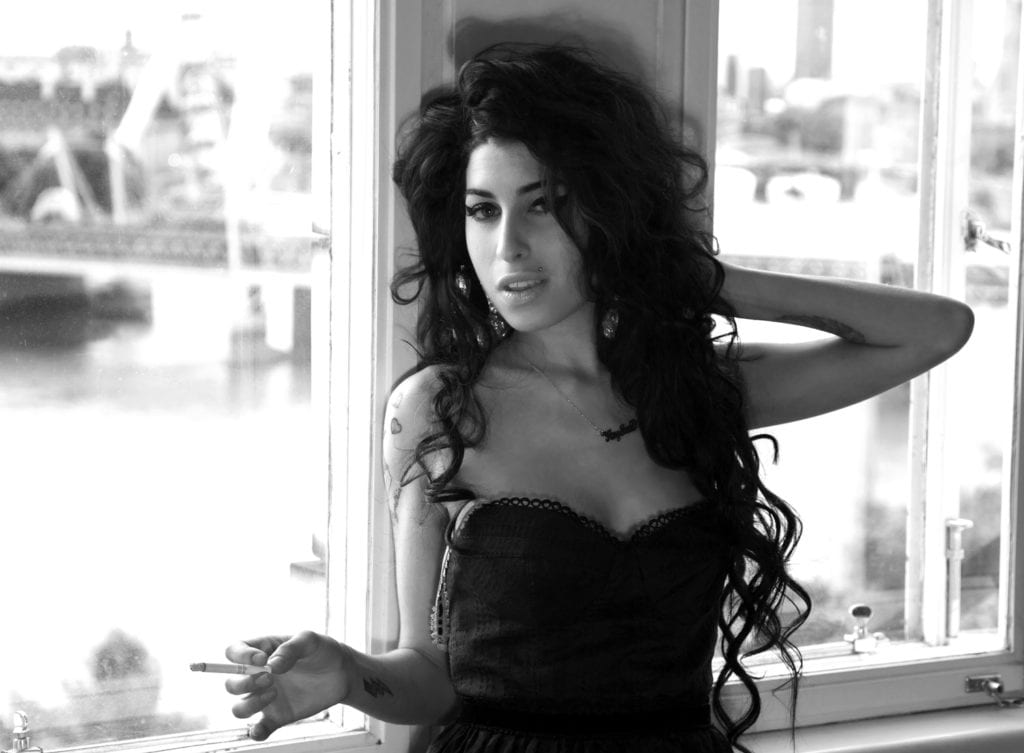
Luntz: This piece is really great. You were at the Savoy Hotel, right?
Benson: Amy Winehouse.
Luntz: And you were at the Savoy Hotel, you had tea with her afterwards, and you said you caught her on, sort of an upswing. When she was feeling good.
Benson: Seemingly I got her in between two drug moments.
Luntz: It’s a nice picture.
James Brown

Luntz: And this picture has a nice story. Right?
Benson: I was driving around town and I was looking for pictures and he said to me, “Stop here.” And then he would run into people’s backyards, do the splits, and then run back in the car and he would go to another house, jump out, do the same thing. He did that about eight times.
Luntz: And the audience loved it.
Benson: And it was, strangers. But this guy that they all know and love.
Judy Garland

Benson: Well, Judy Garland was something special. I had photographed her in London a few times. And you know, it’s funny, you mentioned it to them that you were there and they say, “Oh yes.” Like, you know, get on with the story. But no, she remembered.
Luntz: And who lit her cigarette there? Do you know?
Benson: Oh, hands came round. A man. People came round because she brought it.
Luntz: And was she at the airport in Amsterdam or where was she when you shot her?
Benson: No, it was in Amsterdam. I went there to photographer her. And that’s in the hotel room.
Luntz: She looks very expressive like she’s had a hard life.
Benson: Yeah. And swore. Her language was terrible.
Luntz: But she was nice to you?
Benson: Oh she was nice to anybody. She was nice.
Luntz: But you got an intimate picture of her. It’s a very nice picture.
Benson: And I liked her. People liked her.
Ray Charles

Benson: I’m lucky that I had two children with him which makes the picture look soft.
Luntz: It’s a great picture. Yeah, it softens the picture.
USA for Africa

Luntz: You were the only photographer invited to USA for Africa.
Benson: That’s right, and it was because of Michael Jackson. Michael Jackson said I only want Harry Benson there.
Luntz: Yeah, that’s a good endorsement.
Benson: And yeah. That’s Bruce Springsteen, Dylan..
Luntz: And all the heavyweights.
Willie Nelson

Luntz: And Willie Nelson in the bathtub.
Benson: He needed a bath that day. I’m only joking, Willie.
Luntz; He looks like he’s very happy being photographed.
Benson: Very happy. No, he’s a decent guy.
The Who
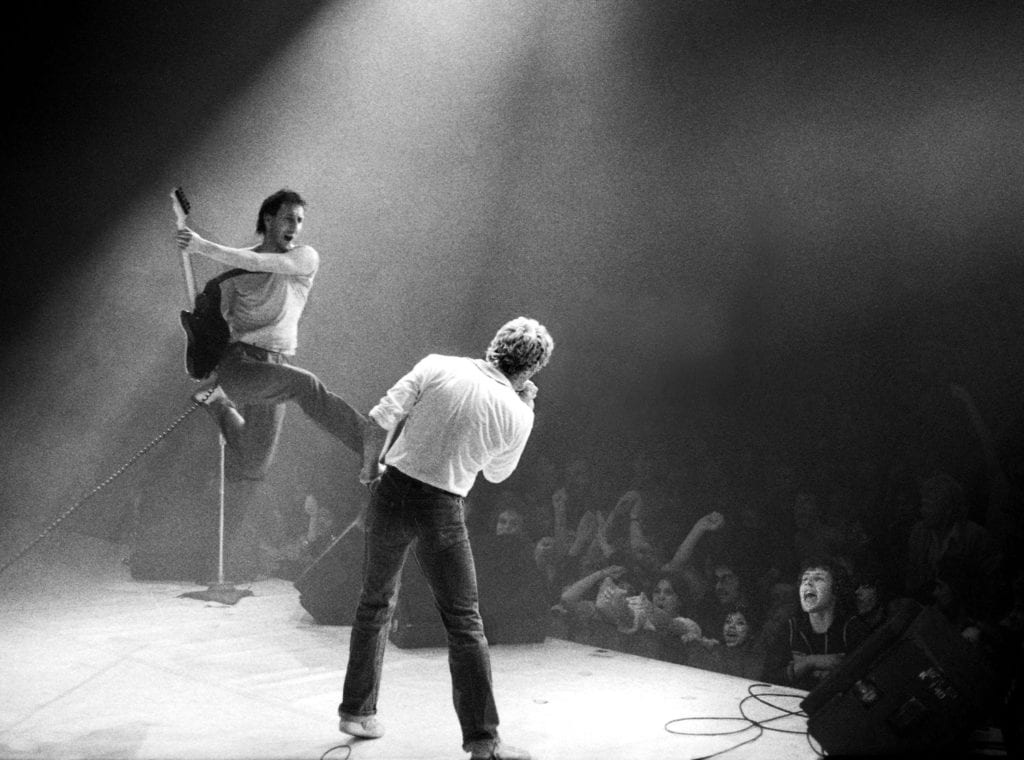
Luntz: That’s The Who.
Benson: Yeah, that’s The Who on stage. And it’s interesting because they never let anyone near them on stage.
Luntz: So you were behind? So you are on the stage?
Benson: And that’s what makes it an interesting.
Luntz: Many photographers couldn’t get that photograph.
Benson: Damn straight. They weren’t as good as me. They couldn’t get it.
Sammy Davis

Luntz: Sammy Davis.
Benson: Sammy Davis was maybe the greatest entertainer I’d ever seen. I photographed him in London, probably back about 1958. He was terrific.
Paul McCartney

Luntz: That’s the next book that Taschen is releasing.
Benson: That’s the cover.
Luntz: So they are releasing it as a limited edition book. You can buy it at Taschen. I think it comes with a print. It’s going to be an expensive book. I think it’s going to be a thousand dollar book. But eventually we’ll have books for people that, when it becomes a trade edition.
The Beatles

Benson: There’s Paul and John. That’s, they were actually, this is in Paris. They were actually composing and the song, the one they were composing was, “I Feel Fine.” You know, “Baby’s good to me, you know.”
Luntz: And this is how they worked together?
Benson: Absolutely. When they sat at the piano they weren’t joking.
Luntz: They were composing. This was the art form being the greatest kind of composers, probably pop composers of the 20th century. This was them working together.
Benson: That’s right.
Holden: And this is a nice picture of the four of them. So that’s sort of posing for the camera, right?
Benson: Yeah, sure, well I’m also going for a cover and I have to compose so we know who they are.
Luntz: It’s a great, it is a great stand alone picture. We’ve sold it a number of times. It’s really a beautiful picture.

Luntz: And fan mail. And who got the most fan mail?
Benson: No one would guess. You all thought it was Paul. Paul got the least.
Luntz: And who got the most?
Benson: Ringo.
Luntz: There you go. Because?
Benson: Because he was the ugly one.

Luntz: Ok, this is one of the fifty pictures that changed the world in the Life book. You’re on the plane with them. Your first steps into America, their first steps into America. What were you thinking?
Benson: I better get this picture because there was a lot of competition. Screaming. They were screaming and shouting. And PR and you know, it was just awful.
Luntz: And you told me that John and Paul didn’t know how well they’d be received in America. So they were nervous.
Benson: John was worried because John was very political. He thought there would be civil rights people.
Luntz: Because Kennedy was just assassinated in 63 and this is 64. America was in a time of great trial and tribulation.
Benson: And that was discussed on the plane by John. He was smart.

Benson: Ed Sullivan show.
Luntz: And that, if we’re old enough, we remember. It was the largest TV audience at the time. 70 million people or something crazy like that tuned in.

Luntz: Again, other people take pictures, this is a picture that Harry kind of did more than just take. You set it up, right? The backstory quickly?
Benson: Well, I was going to cover this is in Miami. The Beatles were performing. I took them to see Cassius Clay, who became Muhammad Ali. Muhammad Ali hadn’t won the title and John Lennon said, “Why do, why did you take us to meet a second-rate boxer? He hasn’t got the title.” And they all agreed. But I made them do it.
Luntz: And what a picture. And you said they felt sort of silly. That this was the only time you figured anybody got the best of The Beatles.
Benson: That’s right. He completely dwarfed them.
Luntz: And you also mentioned, which is interesting with these pictures, that it’s the only time two of the greatest icons of the 20th century were together.
Benson: That’s right. There was no one like Muhammad Ali, Cassius Clay, and The Beatles.

Luntz: And that is the contact strip that you said you used the George V bathroom with chemicals. For not being a rock and roll photographer, that’s probably the most famous contact strip in rock and roll history.
Benson: Well, it’s The Beatles.

Benson: like this picture because it’s like the flag going up at Iwo Jima, with the marines. Because of the motion of the picture and just the way it’s lined up. You know, four people, it’s very difficult doing four people but they’re in…
Luntz: It’s one of these pictures that, magically, again everything just lines up.
Benson: They were having a pillow fight and it fell into that.

